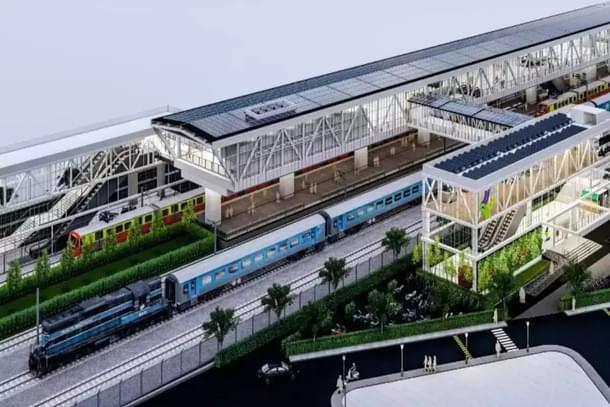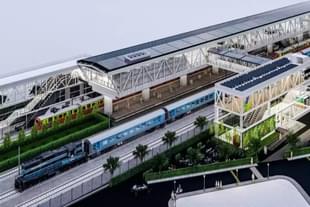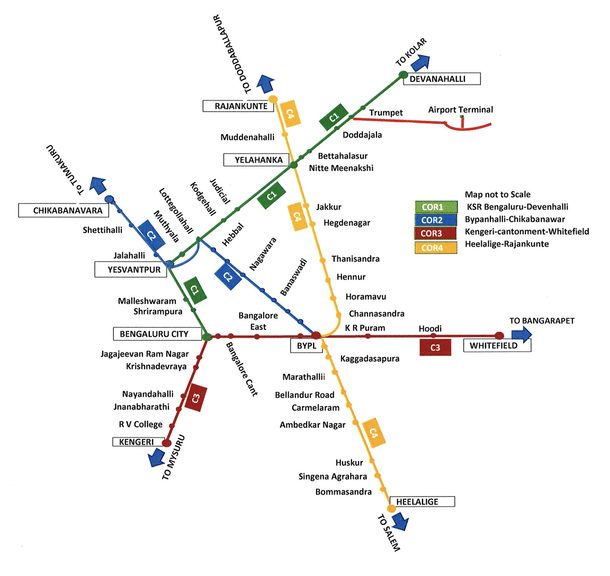Infrastructure
Bengaluru's Suburban Rail: Over 650 Buildings To Face Demolition For Rs 15,767 Crore Project
V Bhagya Subhashini
Apr 10, 2024, 03:15 PM | Updated 03:15 PM IST
Save & read from anywhere!
Bookmark stories for easy access on any device or the Swarajya app.


Bengaluru's ambitious Suburban Rail Project (BSRP) is advancing steadily, yet it grapples with significant repercussions for numerous structures in its path. Nearly 650 structures, encompassing residential, commercial, and other properties, are slated for complete or partial demolition across all four corridors of the 148-km rail network.
The BSRP project plan comprises four corridors with a total length of 148.17 km. These corridors include KSR Bengaluru City to Devanahalli (Corridor 1 - 41.4 km), Baiyappanahalli to Chikkabanavara (Corridor 2 - 25.01 km), Kengeri to Whitefield (Corridor 3 - 25.01 km), and Heelalige to Rajanukunte (Corridor 4 - 46.25 km).
The Social Impact Assessment and Resettlement Policy Framework report sheds light on the extensive impact, with Corridor-2, bearing the brunt of 289 structures earmarked for demolition.
This corridor, already witnessing construction activities under the supervision of Rail Infrastructure Development Company (Karnataka) Limited (KRIDE), faces significant structural changes.
Corridor-4 closely follows with 140 structures designated for demolition, while Corridor-3 (Kengeri to Whitefield) and Corridor-1 (Majestic to Devanahalli) are also affected, with 135 and 85 structures respectively slated for removal, according to a Times Of India report.

The project entails the permanent acquisition of 233 hectares of land, encompassing railway land, Karnataka government property, forest land, and private land, for stations, depots, and running corridor sections. The report outlines the varying width of the double-track corridor, dependent on alignment gradient and curvature, with a minimum width of 16.5 metres.
Previously, an agreement stipulated the transfer of railway land to KRIDE for a nominal fee of Re 1 per acre. KRIDE, tasked with constructing 69 stations across the four corridors, including those on quadrupling projects and at the Kempegowda International Airport campus, plans rail depots for Devanahalli and Soladevanahalli, along with interchange stations at strategic points.
One area significantly affected by the project is Mathikere, housing the MR Jayaram Colony, a sprawling slum occupying 1 acre. The elevated alignment of Corridor-2 is set to pass over the fringes of this slum, impacting 143 structures and 650 residents. While some residents possess higher education qualifications, many are construction workers with limited literacy skills.
To mitigate risks, residents will be temporarily relocated during viaduct construction, although the demolition of all houses may not be necessary. The revised alignment of Corridor-2 aims to minimise impact, with pillar foundations positioned on the road, affecting a total of 32 properties, including private buildings and encroachments.
The BSRP project, inaugurated by Prime Minister Narendra Modi in June 2022, received renewed commitment from Karnataka Infrastructure Development Minister M B Patil, who has set a new deadline of December 2027 for its completion. The estimated cost of the project is Rs 15,767 crore.
The BSRP, while promising enhanced connectivity and mobility for Bengaluru, underscores the intricate balance between infrastructure development and its social ramifications, particularly concerning displacement and resettlement.
V Bhagya Subhashini is a staff writer at Swarajya. She tracks infrastructure developments.





